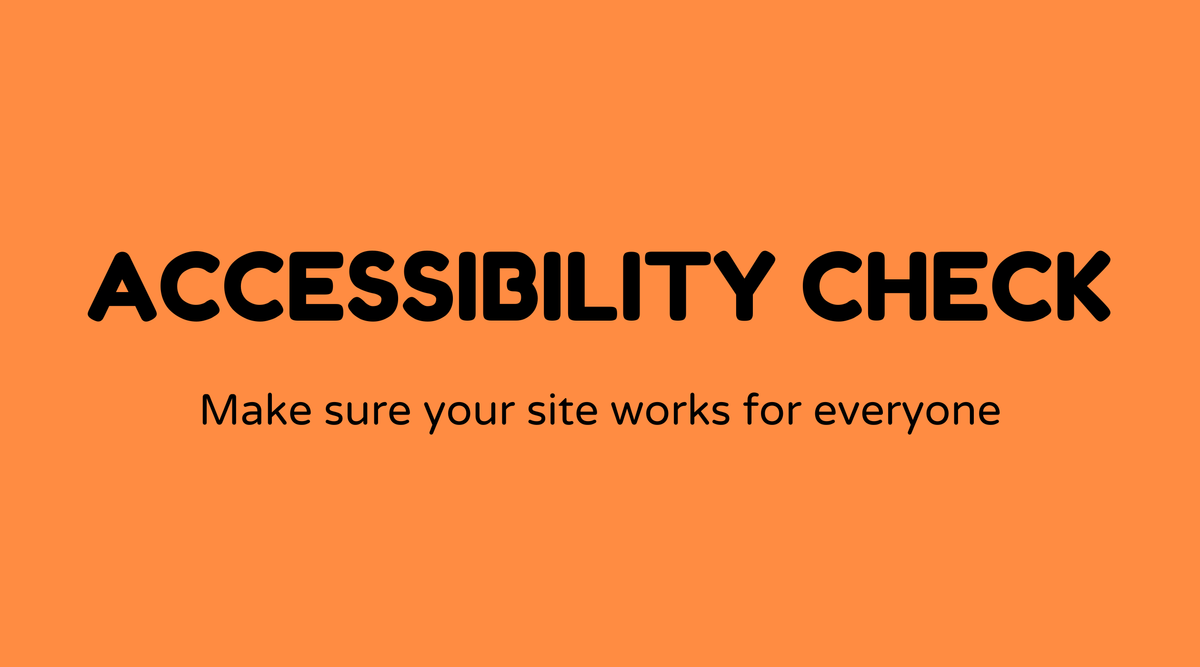Accessibility check

Overview of Accessibility Review
Ah, accessibility review. It's not just a trend; it's essential! Whether concerning digital designs or physical environments, performing an accessibility review guarantees that everyone, irrespective of their abilities, can engage with and benefit from what you provide. Accessibility opens up opportunities, making resources available to everyone. Let me clarify it for you.
Why Accessibility Review Counts
You might question its importance. Well, here's the explanation: it promotes inclusivity. When resources are accessible, all individuals have the same opportunity to take part. From websites to buildings, an accessibility review ensures adherence to standards like the Web Content Accessibility Guidelines (WCAG) or the Americans with Disabilities Act (ADA). Also, it positively reflects on an organization, demonstrating a dedication to diversity, inclusion, and legal compliance. Plus, it can enhance your audience reach!
What is an Accessibility Review?
An accessibility review assesses how user-friendly something is for individuals with disabilities. It's a detailed process of pinpointing and addressing barriers that might hinder everyone from accessing digital content or physical spaces. This review typically involves utilizing tools or services to ensure alignment with relevant accessibility standards.
How Do You Conduct an Accessibility Review?
Now, the key question: How do you go about it? Well, it's manageable, but it demands careful attention. Here's a brief guide:
-
Identify the Scope: Define what requires review — a website, document, or physical location.
-
Use Accessibility Tools: Leverage digital tools like WAVE or axe Accessibility Checker for websites. These tools highlight accessibility challenges and provide suggestions for improvement.
-
Manual Testing: Get involved. Use screen readers like NVDA or JAWS (for websites) to experience the content from a visually impaired person's perspective.
-
Review Accessibility Guidelines: Consult the most recent sections of the WCAG or ADA standards for compliance.
-
Engage with Real Users: User testing is invaluable. Involve individuals with disabilities to gain insights into practical accessibility.
-
Implement Feedback: Address identified issues and retest as necessary.
-
Regular Updates: Technology changes, and so does accessibility, making continuous reviews essential.
Examples of Accessibility Review in Action
Seeing examples can help illustrate how accessibility reviews make a difference. Let me share a few:
-
Tech Companies: Organizations like Google and Apple consistently enhance their platforms to ensure products are accessible to everyone. Google's accessibility testing includes user research and automated tools.
-
Educational Institutions: Numerous universities routinely assess online courses to accommodate students with disabilities, using Learning Tools Interoperability (LTI) standards.
-
Public Spaces: Accessibility reviews in public buildings confirm that ramps, signage, and elevators are present and functional for easy access.
FAQs
What are some common accessibility challenges?
Frequent issues include inadequate color contrast, missing alt text for images, inaccessible forms, and videos without captions. These challenges can be addressed by employing universal design principles.
How often should accessibility reviews be conducted?
Regularly! Ideally, after every significant update or redesign, and at least annually for ongoing maintenance.
Can I perform an accessibility review myself?
Certainly, especially for smaller projects. Utilize available tools and resources, but for a thorough assessment, consider professionals experienced in accessibility.
Why is user testing critical in accessibility reviews?
User testing reveals practical barriers and offers insights that automated tools might overlook, ensuring effective accessibility improvements.
Are there free tools for accessibility reviews?
Yes! WAVE and Axe Accessibility Checker serve as excellent free options for web accessibility. They provide a solid starting point for addressing common challenges.
How does accessibility influence SEO?
Improved accessibility contributes to better SEO. Search engines favor accessible sites since they comply with user-friendly web practices, thereby increasing visibility.



